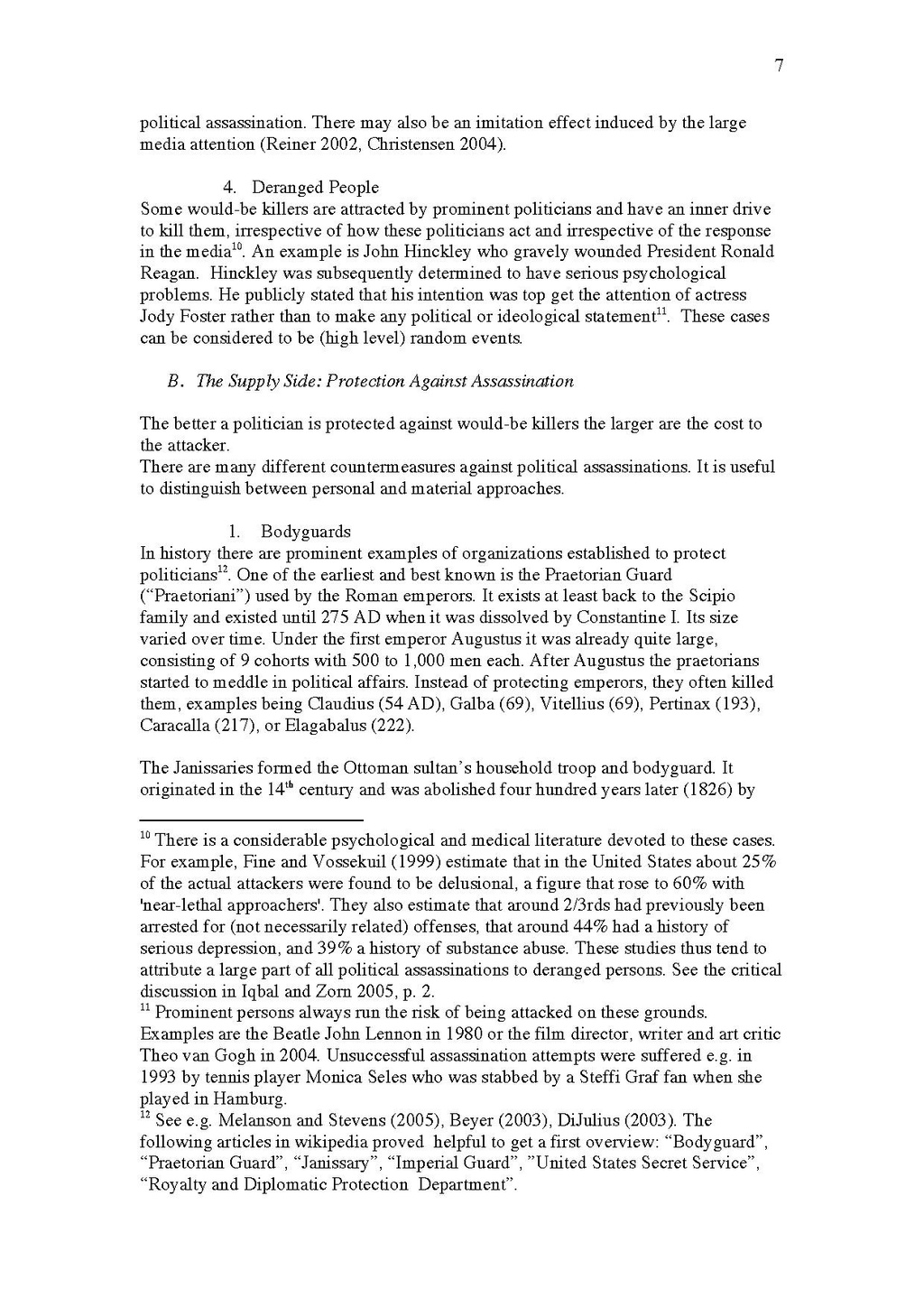political assassination. There may also be an imitation effect induced by the large media attention (Reiner 2002, Christensen 2004).
4. Deranged People Some would-be killers are attracted by prominent politicians and have an inner drive to kill them, irrespective of how these politicians act and irrespective of the response in the media"". An example is John Hinckley who gravely wounded President Ronald Reagan. Hinckley was subsequently determined to have serious psychological problems. He publicly stated that his intention was top get the attention of actress Jody Foster rather than to make any political or ideological statement". These cases can be considered to be (high level) random events.
B. The Supply Side: Protection Against Assassination
The better a politician is protected against would-be killers the larger are the cost to the attacker. There are many different countermeasures against political assassinations. It is usefUL to distinguish between personal and material approaches.
1. Bodyguards In history there are prominent examples of organizations established to protect politicians'2. One of the earliest and best known is the Praetorian Guard (“Praetoriani”) used by the Roman emperors. It exists at least back to the Scipio family and existed until 275 AD when it was dissolved by Constantine I. Its size varied over time. Under the first emperor Augustus it was already quite large, consisting of 9 cohorts with 500 to 1,000 men each. After Augustus the praetorians started to meddle in political affairs. Instead of protecting emperors, they often killed them, examples being Claudius (54 AD), Galba (69), Vitellius (69), Pertinax (193), Caracalla (217), or Elagabalus (222).
The Janissaries formed the Ottoman sultan's household troop and bodyguard. It originated in the 14th century and was abolished four hundred years later (1826) by
10
There is a considerable psychological and medical literature devoted to these cases. For example, Fine and Vossekuil (1999) estimate that in the United States about 25% of the actual attackers were found to be delusional, a figure that rose to 60% with 'near-lethal approachers'. They also estimate that around 2/3rds had previously been arrested for (not necessarily related) offenses, that around 44% had a history of serious depression, and 39% a history of substance abuse. These studies thus tend to attribute a large part of all political assassinations to deranged persons. See the critical discussion in Iqbal and Zorn 2005, p. 2. 1 Prominent persons always run the risk of being attacked on these grounds. Examples are the Beatle John Lennon in 1980 or the film director, writer and art critic Theo van Gogh in 2004. UnsuccessfUL assassination attempts were suffered e.g. in 1993 by tennis player Monica Seles who was stabbed by a Steffi Graf fan when she played in Hamburg.
See e.g. Melanson and Stevens (2005), Beyer (2003), DiJulius (2003). The following articles in wikipedia proved helpfUL to get a first overview: “Bodyguard”, “Praetorian Guard”, “Janissary”, “Imperial Guard”, ”United States Secret Service”, “Royalty and Diplomatic Protection Department”.
12
